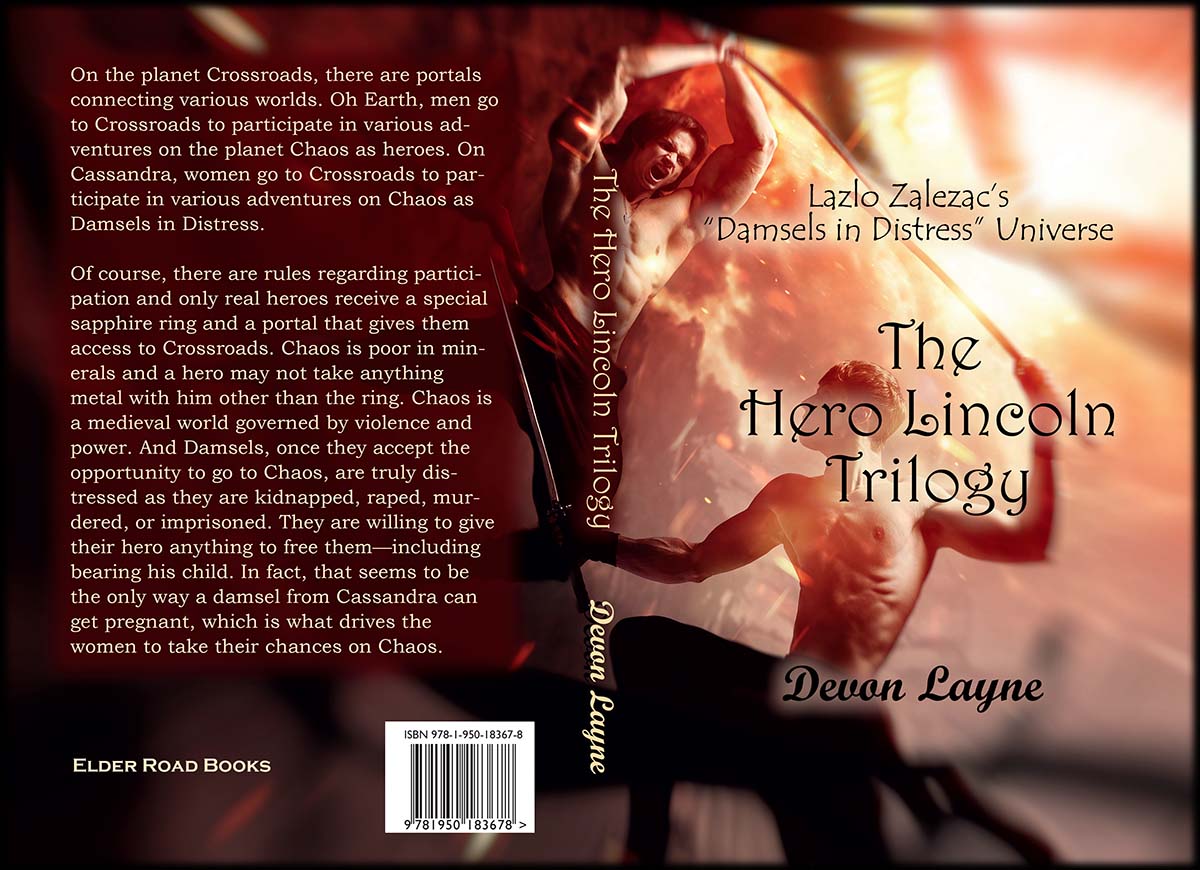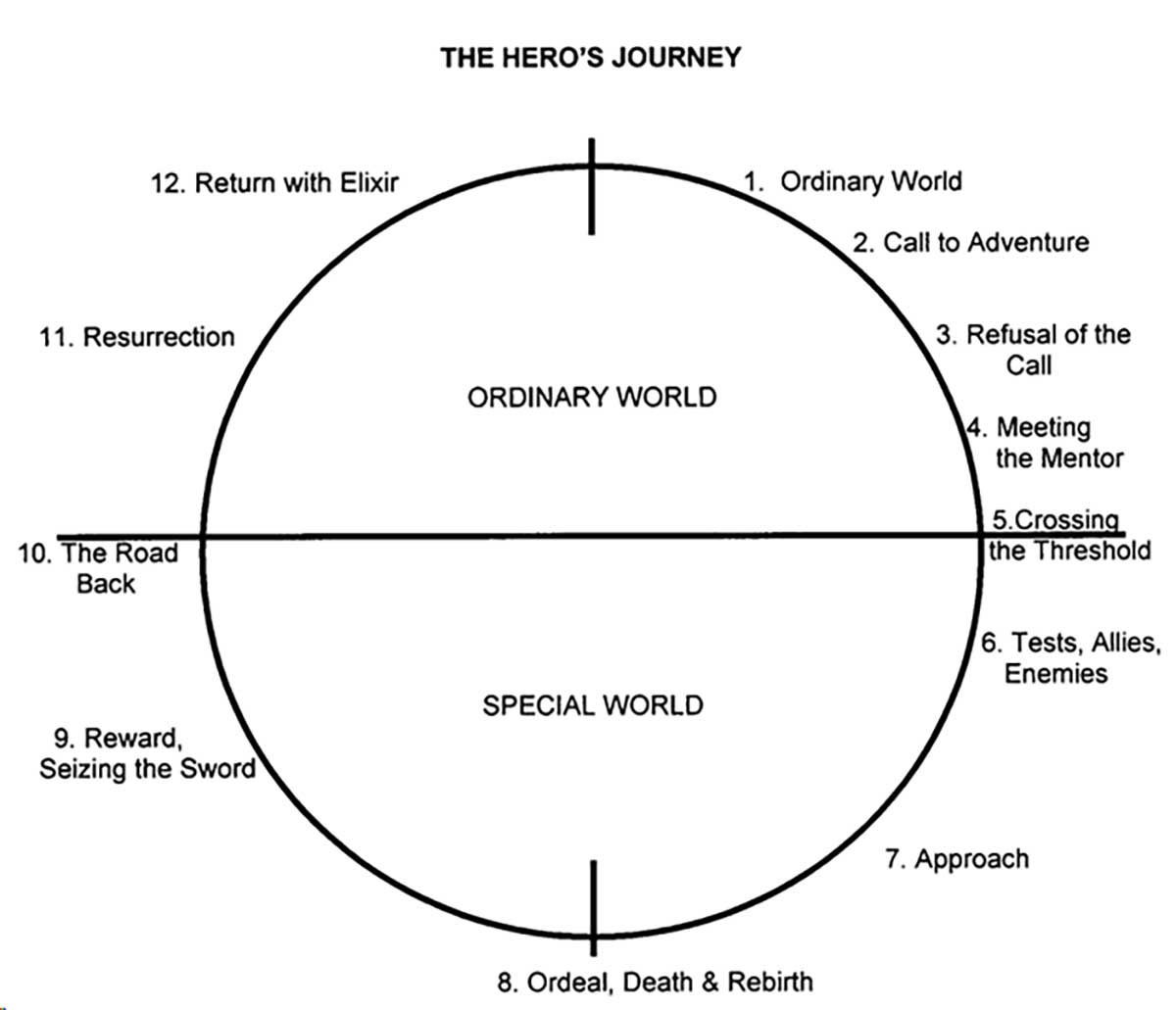9/1/2024
The Hero’s Journey
This is number seventy-seven in the blog series, “My Life in Erotica.” I encourage you to join my Patreon community to support my writing.

I CUT MY TEETH in mythology by reading Joseph Campbell’s The Flight of the Wild Gander, a collection of his essays on mythology. I believe it was a result of Dr. Cassell’s class in comparative religions at dear old ICC that introduced me to the book, published in 1968. But it inspired further digging into Campbell’s understanding of mythology when I started writing my own myth in Devon Layne’s Behind the Ivory Veil.
And what does mythology have to do with plotting a story and writing it down?
Campbell compared the mythology of dozens of religions on an equal footing. He held that the stories of Krishna, Buddha, Apollonius of Tyana, and Jesus all shared a similar mythological base and that when they were interpreted as biography, history, or science, the story is killed—the life goes out of it, temples become museums, and the link to universal themes is lost.
His first and possibly most famous book was The Hero with a Thousand Faces. This is where he first began alluding to the Hero’s Journey, a common theme within nearly every religious mythology in the world.

I thought ‘What better work of mine to illustrate the Hero’s Journey than Devon Layne’s Hero Lincoln Trilogy, set in Lazlo Zalezac’s “Damsels in Distress” universe.
The universe was made for stories of heroes, and it is best when the stories are focused on adhering to the rules of the universe and actually following a hero from his calling to his rescue of a damsel to his reward and return to his own world. This is essentially the Hero’s Journey, and you might recognize these elements in the previous posts about the Save the Cat! Writes a Novel beat sheets. But where the latter book focuses on contemporary literature, Campbell’s work takes us back in time to show us that this theme is a constant throughout history.
Set in a remote world where there are harsh realities and a high likelihood of death for would-be heroes, the stories are sufficiently remote from the reality of our world that we can accept the lessons they teach rather than searching for the historical precedents and factual material on which they are based. At that point, we can release ourselves from our disbelief and find parallels to almost everything in our own daily lives. And that is the purpose of mythology.

The Hero Lincoln Trilogy is available as a collection or individual eBooks at Bookapy. It is also available as a single volume collection in paperback from Barnes and Noble.

So, how does this journey, derived from comparative mythology, help an author in writing fiction today? Much like the beats described last week, the Hero’s Journey plots the necessary steps that take place from page one of the manuscript to “The End.” I present them here in hopes that an alternative to the beat sheet might be helpful. I have used this outline repeatedly!

- 1. THE ORDINARY WORLD. The hero is introduced sympathetically so the audience can identify with the situation or dilemma or polarities in conflict.
- 2. THE CALL TO ADVENTURE. Something shakes up the situation so the hero must face the beginnings of change.
- 3. REFUSAL OF THE CALL. The hero feels the fear of the unknown and tries to turn away from the adventure.
- 4. MEETING WITH THE MENTOR. The hero comes across a seasoned traveler of the worlds who gives him or her training, equipment, or advice.
- 5. CROSSING THE THRESHOLD. At the end of Act One, the hero commits to leaving the Ordinary World and entering a new region or condition with unfamiliar rules and values.
- 6. TESTS, ALLIES AND ENEMIES. The hero is tested and sorts out allegiances in the Special World.
- 7. APPROACH. The hero and newfound allies prepare for the major challenge in the Special world.
- 8. THE ORDEAL. Near the middle of the story, the hero enters a central space in the Special World and confronts his or her greatest fear.
- 9. THE REWARD. The hero takes possession of the treasure won by facing death.
- 10. THE ROAD BACK. About three-fourths of the way through the story, the hero must get the treasure home. Urgency and danger.
- 11. THE RESURRECTION. At the climax, the hero is severely tested once more. By the hero’s action, the polarities that were in conflict at the beginning are finally resolved.
- 12. RETURN WITH THE ELIXIR. The hero returns home or continues the journey, bearing some element of the treasure that has the power to transform the ordinary world as the hero has been transformed.
As you can see, the structure is very similar, but has different phrasing than the three-act beat sheets, but significant things occur in sync. Take, for example, 8. The Ordeal. Just as in the beat sheets, this comes halfway through the story and the hero is apparently triumphant or apparently defeated. He must work his way back, facing his greatest weaknesses or demons to actually seize the sword or the object of the quest—to claim the reward. Even then, the journey is not over. He must find his way back to the normal world, with the damsel, if you will, and bring her across to reality.
What impresses me most about comparing the Hero’s Journey with the Save the Cat! beat sheets is how contemporary literature, on which the beat sheets are based, so closely follows the same pattern that has made compelling myths throughout human history, on which the Hero’s Journey was based.
Joseph Campbell passed away in 1987, not long after filming a series of interviews with Bill Moyer that aired soon thereafter. The series, titled The Power of Myth, goes more deeply into the Hero’s Journey and Campbell clarifies some of his earlier statements, like the often misinterpreted “Follow your bliss.” He comments that he should have said “Follow your blisters.” The Power of Myth is available as an eBook or video. It will help any writer of fiction, in my humble opinion.

I believe I’ll get into a couple of tools I use for determining what goes into a particular chapter next week. Assuming I have a decent map with the Hero’s Journey or the beat sheets, there is still a story to be written. The excitement of the story is what you put around that skeleton. Just for laughs, I think I’ll call the next one “The Johari Window.”
Please feel free to send comments to the author at devon@devonlayne.com.
